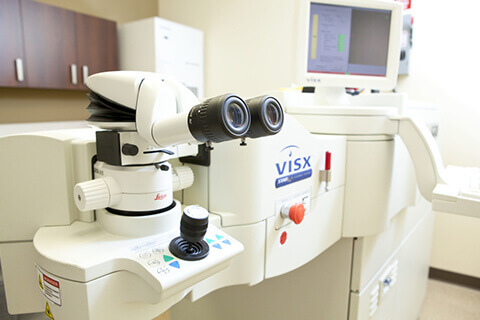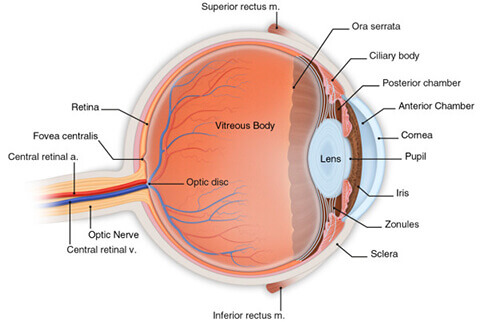LASIK (flap) versus Surface PRK (no flap)

According to some reports over 28 million laser vision correction surgeries have been performed worldwide since the excimer laser was developed in the 1980s. Both PRK surface laser and LASIK surgeries use the excimer laser to reshape the corneal surface. The main difference between the two types of laser vision correction methods is the creation of a corneal flap with LASIK and treatment on the surface of the cornea after removing the thin layer of epithelial cells with PRK.
Advances in both the excimer laser and in flap creation technology have resulted in a variety of names for laser vision correction surgeries. Flap surgeries include LASIK and IntraLase and no flap treatments include PRK, LASEK, and Epi-LASIK. With LASIK a small oscillating blade in a device called a microkeratome is used to cut the LASIK flap. With IntraLase the femtosecond laser is used to create a corneal flap. Originally called “flap and zap”, with LASIK and Intralase the flap is lifted and the excimer laser reshaping is done on the underlying corneal tissue. With no flap treatments the excimer laser energy is applied directly to the surface of the cornea.
PRK surface laser vision correction gained in popularity from it’s introduction in the 1980s over the next decade. LASIK was introduced in the 1990’s and became the most popular laser vision correction by the early 2000’s due to faster recovery. Within the past several years there has been a shift back towards surface treatments due to the improvements in post operative management and in excimer laser technology. It has also been determined that for some people PRK surface treatments may be a better choice. The reasons that PRK may be recommended include:

- Risk of flap shift or trauma with job or sports activities.
- Thin corneas that may be a risk for ectasia (unstable cornea with progressive thinning) with LASIK flap.
- Very steep or very flat corneal curvatures that may increase LASIK flap complication risk.
- Previous injury or eye or eyelid surgeries that may raise the risk of LASIK flap complications.
- Moderate dry eye might be worsened by the deeper disruption of corneal nerves with LASIK flaps.
Both LASIK and PRK have be demonstrated to produce equally good results over 6 months or more. In the short term of days to weeks LASIK patients will recover vision more quickly. So taking a short term perspective it makes sense that people may choose a LASIK flap laser vision correction method.
Taking a long term approach there are advantages to forgeting the LASIK flap and choosing a no flap PRK surface treatment. Advantages of a no flap PRK approach include:
- no LASIK flap = no flap complictions such as incomplete flaps, buttonholed flaps, partial flaps
- no LASIK flap eliminates the risk for flap dislocation in the future
- no LASIK flap means there can not be complications like epithelial ingrowth, diffuse lamellar keratitis, interface debris, flap wrinkles, or other LASIK flap related complications.
- Less risk of a weak and unstable cornea called corneal ectasia due to the LASIK flap disrupting the cornea more deeply than surface PRK.
- Possibly less risk of severe dry eye with surface PRK.
To make the choice that is right for you, first find out if you qualify for laser vision correction and then learn the pros and cons of the treatments available to you. If you have questions about laser vision correction or wish to book a complimentary evaluation with Dr. Anderson Penno, contact Western Laser Eye Associates.
